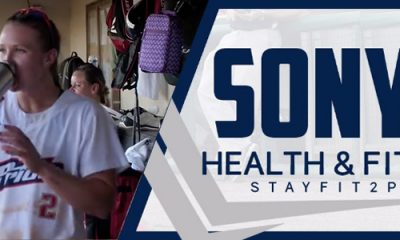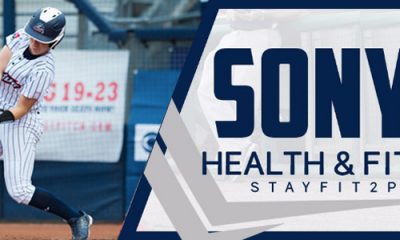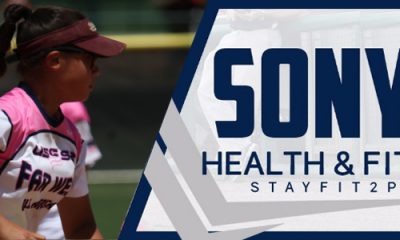 There are certain injuries that will occur with athletes and seem to bring some familiarity to parents when they hear the diagnosis. One such injury that seems to be more prevalent than most are Anterior Cruciate Ligament (ACL) tears in our youth athletes. It seems that more athletes have been dealing with this injury at a younger ages in middle school and very commonly in high school. Although the majority of these ACL tears seem to be targeted towards young female athletes as compared to their male counterparts the problem is still too prevalent.
There are certain injuries that will occur with athletes and seem to bring some familiarity to parents when they hear the diagnosis. One such injury that seems to be more prevalent than most are Anterior Cruciate Ligament (ACL) tears in our youth athletes. It seems that more athletes have been dealing with this injury at a younger ages in middle school and very commonly in high school. Although the majority of these ACL tears seem to be targeted towards young female athletes as compared to their male counterparts the problem is still too prevalent.
The rise of such injuries seem to be rooted in several reasons due to the high volume of youth involvement in competitive sports as compared to years before and specialization in the same sport year round. The more competitive young athletes become the higher the exposure rate to athletic injuries. Young athletes who are still developing face the risk of constant wear and tear from playing the same sport year round, and developing only the same group of muscles required for their sport. Over time this specialization in one sport will place a great deal of stress upon a young athlete’s developing body.
In addition, research over time has shown a higher occurrence of ACL tears in young female athletes as compared to male athletes of the same age. The muscle development, hormones, and anatomical design have all been theorized in some way to increase the likelihood of ACL tears in female athletes. Despite all these theories none has been proven to be the single main reason as to why female athletes tear their ACLs at a greater rate than males. Many of these factors are not something that can be completely controlled except the muscular imbalances in females who are often quadriceps dominant and rely heavily on these muscles rather than using their hamstrings.
The main complication that arises with ACL tears in the pre adolescent athletes is their bodies are still maturing. In addition, a pre adolescent athlete has growth plates, which are still open, and complicates the procedure for a normal ACL reconstruction. Many times physicians recommend a conservative approach to postpone surgery and allow the growth plates to close. In the long run this recommendation can cause further complications in the young athletes with an increase of meniscal tears and chondral bone defects.
One way parents and coaches can help prevent these ACL tears in their young athletes are to make sure they are not playing the same sport year round especially during the pre adolescent years. Should your child sustain an ACL tear and must postpone surgery due to their age and development parents should restrict playing sports that do not involve a great deal of cutting and change of direction in hopes to prevent long-term damage. With female athletes especially, it is important for coaches to explain and demonstrate proper dynamic movements such as cutting, jumping, and change of directions. So many ACL tears in female athletes take place with no contact but result from a jump or a sharp change of direction.
Previous studies have found that male athletes have more neuromuscular development and better techniques when it comes to jumping and change of direction. Many different types of ACL prevention routines have been developed to help coaches understand what muscles and movements need to be developed in growing athletes. As parents of competitive young athletes, take the time to reach out to surrounding health care providers whether it be an orthopedic doctor, an athletic trainer, or a physical therapist for extra advice on how to implement some preventative exercises to prevent ACL tears.
Where to Begin?
The implementation of an ACL prevention program will help neuromuscular development, which is necessary to train some muscle imbalances in younger specifically female athletes.
The vital components of any ACL prevention program
- Performing a proper dynamic warm-up
- Plyometric jump training with emphasis of double and single leg landing
- Strengthening body and postural control
- Strengthening lower body muscles
- Learning to use trunk/core stabilization
- Training body awareness
- Using proper mechanics on sport specific components.
Follow Sonya on Twitter: @SonyaMontoya2
About USSSA Florida Pride:
The USSSA Florida Pride is a professional franchise in the National Pro Fastpitch League that is owned and operated by USSSA. The amateur organization of USSSA has multi-sport coverage and encompasses teams and players from the United States and abroad.
About NPF:
National Pro Fastpitch is headquartered in Nashville, TN. The league, created to give elite female fastpitch players the opportunity to pursue a professional career in their chosen sport, has operated since 1997 under the names of Women’s Pro Fastpitch (WPF) and Women’s Pro Softball League (WPSL). NPF is the Official Development Partner of Major League Baseball in the category of women’s fastpitch softball since 2002.
About USSSA:
The United States Specialty Sports Association (USSSA), headquartered in Osceola County, Florida, USSSA is the World’s Largest Multi-sport Athletic Organization. Founded in 1968, USSSA has grown to over 3.7 million participants, competing in 13 nationally sanctioned sports including Baseball, Fastpitch, Slow Pitch, Karate, Basketball, Soccer and more! For more information on USSSA and to register your team visit USSSA.com. Also be sure to visit USSSAToday.com for the latest USSSA News!















You must be logged in to post a comment Login